Podcast: Play in new window | Download
Subscribe: Apple Podcasts | RSS
Morelos is a landlocked state located in south-central Mexico. It is bordered by Mexico’s Federal District to the north, and by the state of México to the northeast and northwest, Puebla to the east and Guerrero to the southwest. It is Mexico’s second smallest state, but it is home to an overabundance of myths and legends. Here are seven.
- The Mirror Lady
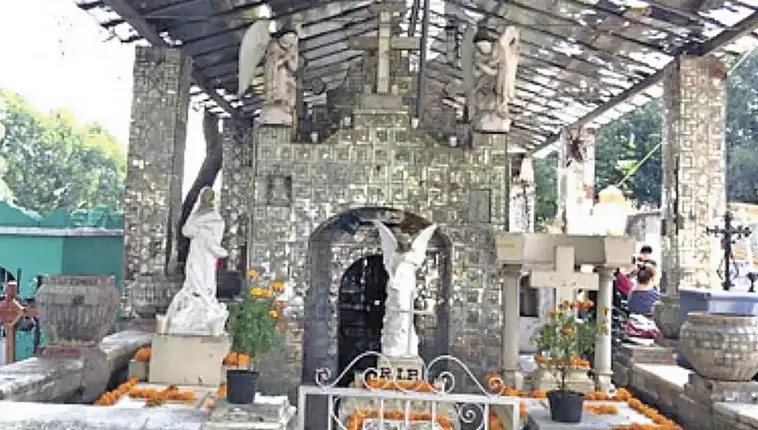 A long time ago in Cuernavaca very vain woman, who had been very beautiful during her youth, lay on her deathbed. Before leaving this earth, she asked her husband for one last favor: to cover her tomb with mirrors. When she was young, she would sit in front of the mirror and comb her hair for long hours, admiring her own beauty. Thus, she wanted to eternally represent her precious appearance in the place that would keep her body forever. Her husband honored her last request and the woman’s tomb can still be visited in the Panteón de la Leona in Cuernavaca. Although the woman’s body perished, it seems her spirit refuses to lose its charm. It is said that around the Day of the Dead, she can still be seen lurking among her glowing sepulcher. She sometimes hails a cab to take her home; but she disappears when she gets out of the vehicle, leaving the drivers spellbound and completely terrified.
A long time ago in Cuernavaca very vain woman, who had been very beautiful during her youth, lay on her deathbed. Before leaving this earth, she asked her husband for one last favor: to cover her tomb with mirrors. When she was young, she would sit in front of the mirror and comb her hair for long hours, admiring her own beauty. Thus, she wanted to eternally represent her precious appearance in the place that would keep her body forever. Her husband honored her last request and the woman’s tomb can still be visited in the Panteón de la Leona in Cuernavaca. Although the woman’s body perished, it seems her spirit refuses to lose its charm. It is said that around the Day of the Dead, she can still be seen lurking among her glowing sepulcher. She sometimes hails a cab to take her home; but she disappears when she gets out of the vehicle, leaving the drivers spellbound and completely terrified.
- The Diabolical Creature, “El Choco”
The former Hacienda de Coahuixtla used to be a beautiful place; one of the most abundant and prosperous haciendas in the region. There worked a beautiful woman who many young men tried to conquer, without success. She was a demure young lady and rather reserved. Until one day, when she finished bathing in a river, she met a strange man riding a black horse. Like everyone else, he 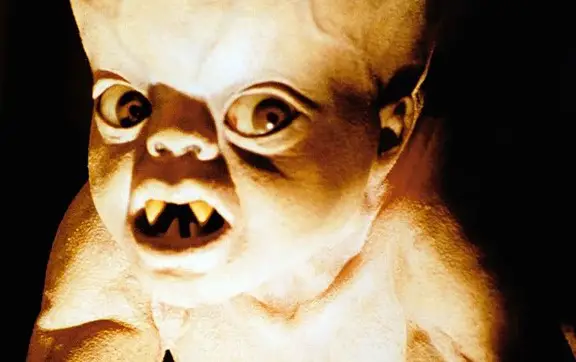 tried to seduce her. At first, she rejected him, but she returned to see him repeatedly. The smooth-talking and, furthermore, extremely attractive type of hers, he ended up winning her over. A few months later the girl was pregnant and the strange man on the black horse disappeared. She was thus born a precious baby; but strangely her son made her very nervous. He seemed to be very attentive to everything that was happening around him, as if he understood all that was going on. The baby seemed wise beyond his years. The young woman’s family decided to baptize the child and his designated godmother took him with her to the church; but halfway, when crossing the river where the baby’s parents had met, he began to laugh. The sound of his laughter was terrifying. Later, with a deep and raspy voice, he announced to his godmother, who was holding him in her arms: “I am going to kill you.” Within moments, she died, and the baby disappeared. It is said that, since then, this diabolical character, now called El Choco, has haunted the ruins of the hacienda. He has been seen playing with bones and laughing uproariously. Some say that they have found a little baby abandoned on the site and they try to take it away to rescue it, but as they carry it their arms burn and suddenly the baby disappears leaving behind the skin of their arms full of blisters and ugly bite marks.
tried to seduce her. At first, she rejected him, but she returned to see him repeatedly. The smooth-talking and, furthermore, extremely attractive type of hers, he ended up winning her over. A few months later the girl was pregnant and the strange man on the black horse disappeared. She was thus born a precious baby; but strangely her son made her very nervous. He seemed to be very attentive to everything that was happening around him, as if he understood all that was going on. The baby seemed wise beyond his years. The young woman’s family decided to baptize the child and his designated godmother took him with her to the church; but halfway, when crossing the river where the baby’s parents had met, he began to laugh. The sound of his laughter was terrifying. Later, with a deep and raspy voice, he announced to his godmother, who was holding him in her arms: “I am going to kill you.” Within moments, she died, and the baby disappeared. It is said that, since then, this diabolical character, now called El Choco, has haunted the ruins of the hacienda. He has been seen playing with bones and laughing uproariously. Some say that they have found a little baby abandoned on the site and they try to take it away to rescue it, but as they carry it their arms burn and suddenly the baby disappears leaving behind the skin of their arms full of blisters and ugly bite marks.
- The Mysterious “El Plateado”
This is the story of Don Manuelito, a man who really enjoyed liquor. One day while walking, already half drunk, through the Texcal hill, Manuelito met El Plateado, a man mounted on a black horse, dressed in a silver suit and silver ornaments. The strange rider told him not to be scared and invited him to a cave where he kept multiple treasures. Don Manuelito accepted and upon arrival he was surprised by thousands of pots full of gold and silver coins. The mysterious man told him to take all that fit in his hands. And so, with the gifted fortune, lucky Manuelito returned to his house, where he told the story. When the gossip spread, some neighbors demanded that he share the treasure and asked him to take them to the cave. Reluctantly, Manuelito accepted. On the way, one of the men, General Izquierdo, decided to stop to rest. When they came back for him, they found him dead. The others accused Manuelito of killing him claiming that he did not want to share the wealth. They almost shot him, but for lack of evidence they let him go. After this fiasco, Manuelito left town, never having taken the greedy townsfolk to the secret caves. Since then, others have claimed to have seen El Plateado, but no one dares share his secret.
- The Headless Pig
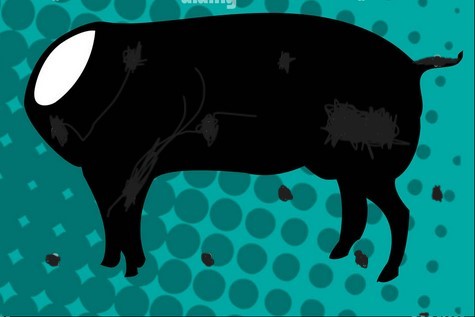 In the town of Tehuixtla this legend is famous. As in many parts of Mexico, people in Tehuixtla believe in nahuales, shape-shifting sorcerers described in Mexico Unexplained episode number 36 https://mexicounexplained.com/the-nagual/. These ancient beings are magical and some use their abilities for good and others to do evil. Many years ago in Tehuixtla a nahual transformed itself into a pig and stole a family’s corn and animals. One day, finally, they managed to capture the pig and cut off his head. Since the nagual died while transformed into a pig, nowadays he still wanders around the town decapitated, trying to find his head.
In the town of Tehuixtla this legend is famous. As in many parts of Mexico, people in Tehuixtla believe in nahuales, shape-shifting sorcerers described in Mexico Unexplained episode number 36 https://mexicounexplained.com/the-nagual/. These ancient beings are magical and some use their abilities for good and others to do evil. Many years ago in Tehuixtla a nahual transformed itself into a pig and stole a family’s corn and animals. One day, finally, they managed to capture the pig and cut off his head. Since the nagual died while transformed into a pig, nowadays he still wanders around the town decapitated, trying to find his head.
- The Ghosts of the Borda Garden
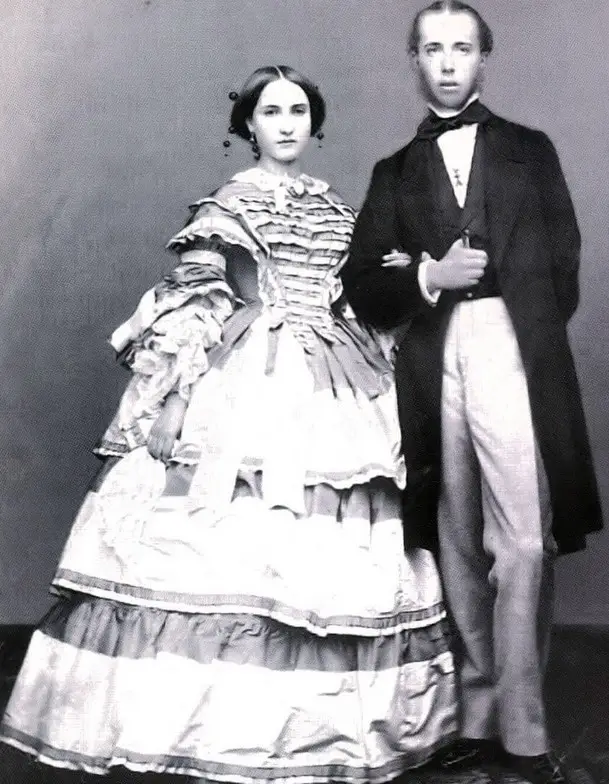 Many spooky stories abound in this beautiful historical location in old Cuernavaca. Locals say that strange beings come out at night with huge hooves. Birds of prey surround the place and horrible snakes also appear from among the plants. Some of Borda Garden’s most famous legends involve former Mexican Emperor Maximilian and his wife, the Empress Carlota. One legend involves the emperor repeatedly seeing a specter called El Chocolatero. He is a figure in black, with a broad hat and a heavy beard, apparently elegantly dressed and who occasionally makes his appearance even into the 21st Century. One story tells that, in their first nights in what was their rest house near the garden, a mummy appeared in the empress’s luggage. The hideous bandaged mummy flew through the rooms letting out macabre laughter. Legend also has it that the spirit of an important confidant of the former royals still haunts the garden, because it is overburdened with keeping the sad secrets of the famous couple. One of the most famous stories of the Borda Garden involves Maximilian being angry with his indigenous servants, because they did not understand his orders in French. The emperor decided to kill one to set an example and left the poor man hanging from a tree for a while. But not long after the execution, the spirit of the murdered native started to appear and continued to do so for many years, to remind others of the injustices that his people have suffered. Carlota saw the face of the hanged man several times and it is thought that this is why she went crazy in her last days, spent far from Mexico.
Many spooky stories abound in this beautiful historical location in old Cuernavaca. Locals say that strange beings come out at night with huge hooves. Birds of prey surround the place and horrible snakes also appear from among the plants. Some of Borda Garden’s most famous legends involve former Mexican Emperor Maximilian and his wife, the Empress Carlota. One legend involves the emperor repeatedly seeing a specter called El Chocolatero. He is a figure in black, with a broad hat and a heavy beard, apparently elegantly dressed and who occasionally makes his appearance even into the 21st Century. One story tells that, in their first nights in what was their rest house near the garden, a mummy appeared in the empress’s luggage. The hideous bandaged mummy flew through the rooms letting out macabre laughter. Legend also has it that the spirit of an important confidant of the former royals still haunts the garden, because it is overburdened with keeping the sad secrets of the famous couple. One of the most famous stories of the Borda Garden involves Maximilian being angry with his indigenous servants, because they did not understand his orders in French. The emperor decided to kill one to set an example and left the poor man hanging from a tree for a while. But not long after the execution, the spirit of the murdered native started to appear and continued to do so for many years, to remind others of the injustices that his people have suffered. Carlota saw the face of the hanged man several times and it is thought that this is why she went crazy in her last days, spent far from Mexico.
- The Bell Tower of Ocotepec
Ocotepec is a town outside Cuernavaca known for its peculiar traditions and legends, one of which involves the bell tower of the church of El Divino Salvador. In 1536 construction work began on the 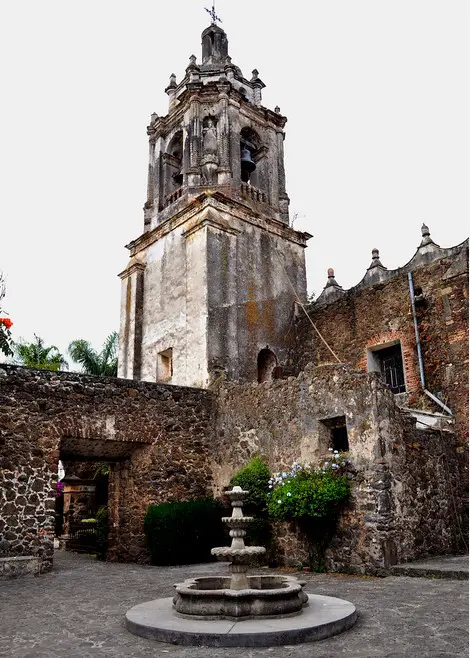 convent of El Divino Salvador, concluding in 1592, however, currently only the church remains, since the convent was destroyed many years ago. This church was one of the first built in Mexico; its construction was seven years after the Cathedral of Cuernavaca. The most famous story involving the bell tower of the Ocotepec church is that of a man who fell from more than 150 feet high, thus ending his life. What was the cause of that fatal event? In the early years of the church’s construction there were non-Catholic indigenous rituals held in the vault of the bell tower. In this place shamans and other native spiritual leaders from the town and its surroundings held gatherings, with the purpose of carrying out rituals with prayers and sacrifices to the old gods. One night, the man whose job it was to ring the church bells, Maurilio Morales, ascended the bell tower, and came upon one of these secret religious meetings. Poor Maurilio saw some things he wasn’t supposed to see and was thus thrown from the top of the tower. Other versions point out that Maurilio could have had an accident when ringing the bells, since the person who rings them must swing at them hard, so he possibly fell when propelled. At present, the inhabitants of Ocotepec comment that anyone who is late at night in the church of El Divino Salvador and wants to ring the bells, will experience paranormal activities due to all the spirits that inhabit the bell tower.
convent of El Divino Salvador, concluding in 1592, however, currently only the church remains, since the convent was destroyed many years ago. This church was one of the first built in Mexico; its construction was seven years after the Cathedral of Cuernavaca. The most famous story involving the bell tower of the Ocotepec church is that of a man who fell from more than 150 feet high, thus ending his life. What was the cause of that fatal event? In the early years of the church’s construction there were non-Catholic indigenous rituals held in the vault of the bell tower. In this place shamans and other native spiritual leaders from the town and its surroundings held gatherings, with the purpose of carrying out rituals with prayers and sacrifices to the old gods. One night, the man whose job it was to ring the church bells, Maurilio Morales, ascended the bell tower, and came upon one of these secret religious meetings. Poor Maurilio saw some things he wasn’t supposed to see and was thus thrown from the top of the tower. Other versions point out that Maurilio could have had an accident when ringing the bells, since the person who rings them must swing at them hard, so he possibly fell when propelled. At present, the inhabitants of Ocotepec comment that anyone who is late at night in the church of El Divino Salvador and wants to ring the bells, will experience paranormal activities due to all the spirits that inhabit the bell tower.
- The Story of Tepoztécatl
In a time before the Spanish, there was once a young maiden who used to bathe in the Atongo ravine. It was said that strange things happened in that ravine, but the maiden did not believe it. So, after a month of bathing there she found out she was pregnant. The young woman presented herself to her parents and, ashamed, she confessed her pregnancy to them. When the boy was born, the grandfather made several attempts to get rid of him. On one occasion the grandfather tried to throw the baby from a great height against some rocks, but a gentle wind deposited it on a beautiful meadow. On another occasion, the baby was left near some maguey plants, but shortly after the stalks bent until they reached his mouth, to give him nectar to drink. In another attempt to get rid of the boy, he was thrown to giant ants but these, far from stinging him, fed him. While walking along a forest path an elderly couple discovered the abandoned baby and adopted him. They named the 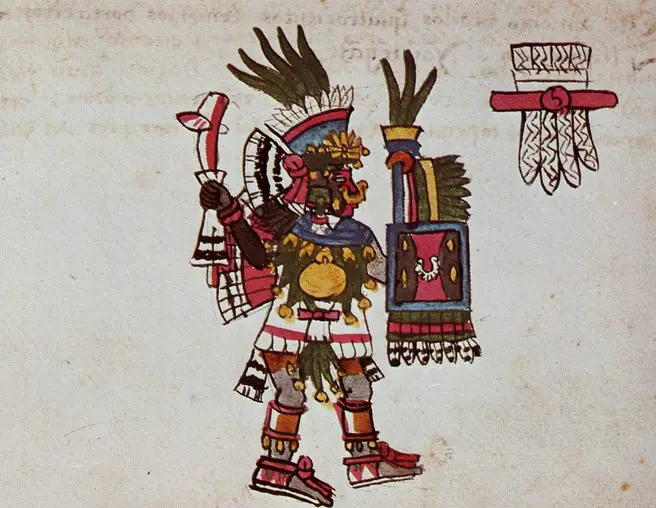 baby Tepoztécatl. Very close to the new home of Tepoztécatl lived Mazacuatl, a feared serpent from Xochicalco, who survived on the sacrifice of elderly people. One day, the town leaders announced to Tepoztécatl’s adoptive father that he had to be sacrificed to this snake. Tepoztécatl offered to go to the sacrifice in his father’s place. So, he left for Xochicalco, and on the way he collected aiztli, small sharp pieces of obsidian, which he kept in his backpack. Arriving at Xochicalco, he appeared before Mazacuatl, and the enormous serpent immediately devoured him. Within the belly of Mazacuatl, Tepoztécatl used the aiztli, and with them he tore the entrails of the feared serpent, thus killing it. During his return trip, Tepoztécatl passed through a celebration in a village in which people were playing drums and flutes. Tepoztécatl wanted to play these instruments and, when he was prevented, he conjured up a storm that threw sand into everyone’s eyes. The boy left with the instruments: the sound of both could be heard in the distance. The villagers chased him and when they caught up with him, it is said that he urinated on them and thus formed the gorge that runs through Cuernavaca. Tepoztécatl soon reached a land called Tepoztlán and took possession of the highest hills, eventually settling on a hill called Ehecatépetl. Tepoztécatl enjoyed local fame for his deeds and exploits and was designated Lord of Tepoztlán and priest of Ometochtli, the God Two Rabbit. Years into his young adulthood Tepoztécatl disappeared. It is not known if he died or went elsewhere, but there are those who say that he went to live next to a huge pyramid and remains there today.
baby Tepoztécatl. Very close to the new home of Tepoztécatl lived Mazacuatl, a feared serpent from Xochicalco, who survived on the sacrifice of elderly people. One day, the town leaders announced to Tepoztécatl’s adoptive father that he had to be sacrificed to this snake. Tepoztécatl offered to go to the sacrifice in his father’s place. So, he left for Xochicalco, and on the way he collected aiztli, small sharp pieces of obsidian, which he kept in his backpack. Arriving at Xochicalco, he appeared before Mazacuatl, and the enormous serpent immediately devoured him. Within the belly of Mazacuatl, Tepoztécatl used the aiztli, and with them he tore the entrails of the feared serpent, thus killing it. During his return trip, Tepoztécatl passed through a celebration in a village in which people were playing drums and flutes. Tepoztécatl wanted to play these instruments and, when he was prevented, he conjured up a storm that threw sand into everyone’s eyes. The boy left with the instruments: the sound of both could be heard in the distance. The villagers chased him and when they caught up with him, it is said that he urinated on them and thus formed the gorge that runs through Cuernavaca. Tepoztécatl soon reached a land called Tepoztlán and took possession of the highest hills, eventually settling on a hill called Ehecatépetl. Tepoztécatl enjoyed local fame for his deeds and exploits and was designated Lord of Tepoztlán and priest of Ometochtli, the God Two Rabbit. Years into his young adulthood Tepoztécatl disappeared. It is not known if he died or went elsewhere, but there are those who say that he went to live next to a huge pyramid and remains there today.
REFERENCES
A special “gracias” to the State Board of Tourism for the state of Morelos.
